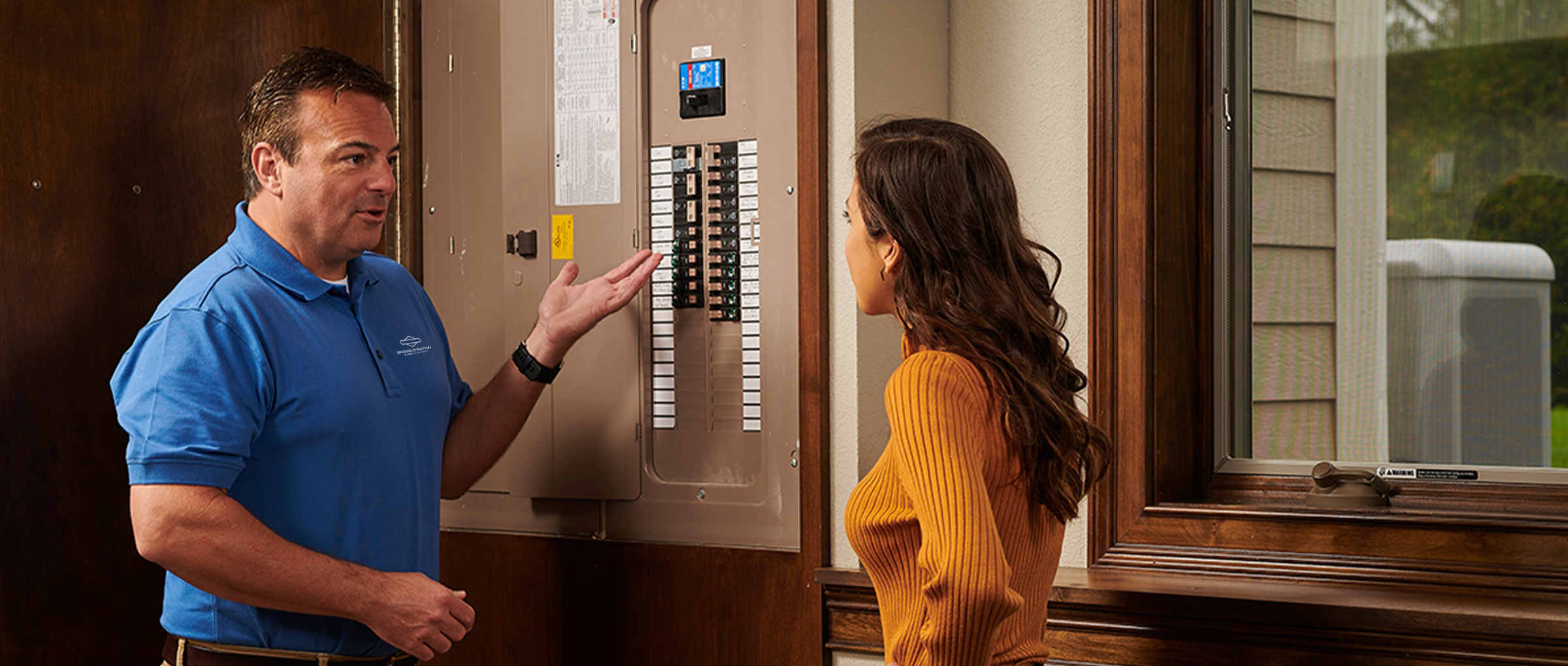As a homeowner, it’s important to know the capacity of electrical service coming to your home from your utility company. Whether you are planning on expanding with renovations or adding a larger appliance, understanding your electrical setup will help you better manage your home. It will also help with generator selection and installation.
Understanding Amps
First, it is beneficial to know that the total available capacity of your electrical service is measured in amperes, or amps. Specifically, amps represent the volume of electricity flowing through wires from the utility grid to your home and then from your electrical panel to appliances in the home. The higher the amperage, the more electricity is available to power items in the home from heating/cooling systems to microwaves and refrigerators.
The standard electrical service for residential homes are 60, 100 or 200 amps. If your home is powered with 60 amps, it was likely built around or before the 1950s. For most modern homes of today, 60 amps is not enough to power all aspects of the home as it only provides enough power for one 240V appliance. If you are thinking of remodeling or making any additions, you will need to increase your electrical capacity. More recent construction homes are serviced with 100 or 200 amps of power, and larger homes with central air-conditioning often require at least 200 amps.
To determine your electrical service amps, find your main service panel. Often these are located in the basement or the exterior of the home. Inside the service panel are individual circuit breakers which control the flow of electrical current to different areas of the home. The central circuit breaker will list the overall amperage rating (60, 100 or 200).
Circuit breakers can only handle their specific rated amperage — if the limit is exceeded, the breaker will shut down to prevent electronics and appliances from damage. It is important to understand how much electricity your home is capable of safely providing. It is also essential knowledge for standby generator selection and installation.
Whole House Generator Sizing
When deciding which home generator size is right for your needs, consider the electrical service to your home. If your home runs on 200 amps, you will likely need a high wattage generator system to maintain power to all your appliances. If your home runs on 100 amps or less, the wattage of your generator may not need to be as great.
Once you know the amount of electrical power needed for the items in your home, work with a knowledgeable electrical contractor to select the appropriate generator for your needs. The generator system is installed with a transfer switch to allow the generator to supply power when the flow of power from the grid is interrupted. This is accomplished by running an electrical connector from the generator to the transfer switch and from the transfer switch to the electrical panel.
Work with a qualified electrician to assess the best generator solution for your power needs based upon the existing electrical service to your home. You can find your local dealer by using the Briggs & Stratton dealer locator.
1. Protect against whole house surges.
The updated 2020 National Electrical Code (NEC) requires surge protectors on all home dwelling generators. Power outages can cause surges in the electrical grid, which put your electronics at risk of damage and possible failure. Similar to a typical household surge protector, having a surge protector as a middle source between direct utility power and your generator prevents surges and protects your electronics. These can be installed with your generator or retrofitted to an existing installation.
2. Never run a generator in an enclosed space.
One of the biggest dangers from gasoline-powered portable generators is the risk of carbon monoxide poisoning. Where portable generators can only be operated safely outdoors, standby generators are professionally installed with safe operation in mind, and because they’re installed outside your home a required distance from your homes inlets such as windows so they pose no risk from carbon monoxide.
Standby generators are placed at least five feet away from an opening in the home with the engine exhaust facing away from windows or doors. This eliminates the possibility of carbon monoxide sickness.
3. Provide regular home generator maintenance.
Like most machines, generators do require maintenance and care. A good rule of thumb is to get your generator serviced either every two years or after 200 hours of use. Establishing a preventative maintenance routine is essential to ensure that your generator will run smoothly in an emergency.
Regularly check the engine oil and coolant levels. Standby generators will run automatic test cycles each week to confirm that all systems are functioning properly. Check your specific generator model to learn the timing and details of this feature. Depending on the season, be sure to clear your generator of foliage or snow. These simple steps can save you time and money on larger maintenance issues down the road.
Generators give you peace of mind that no matter the circumstance, your home will remain powered and operating. By following these generator safety tips, you can also rest assured that your lifestyle and items that matter to you most will be protected. Explore Briggs & Stratton standby generator options today.

Ready to start protecting your home?
Our Whole-House Generator Sizing Calculator allows you to select what you want to power in your home and directs you to the appropriate-sized generator system.



